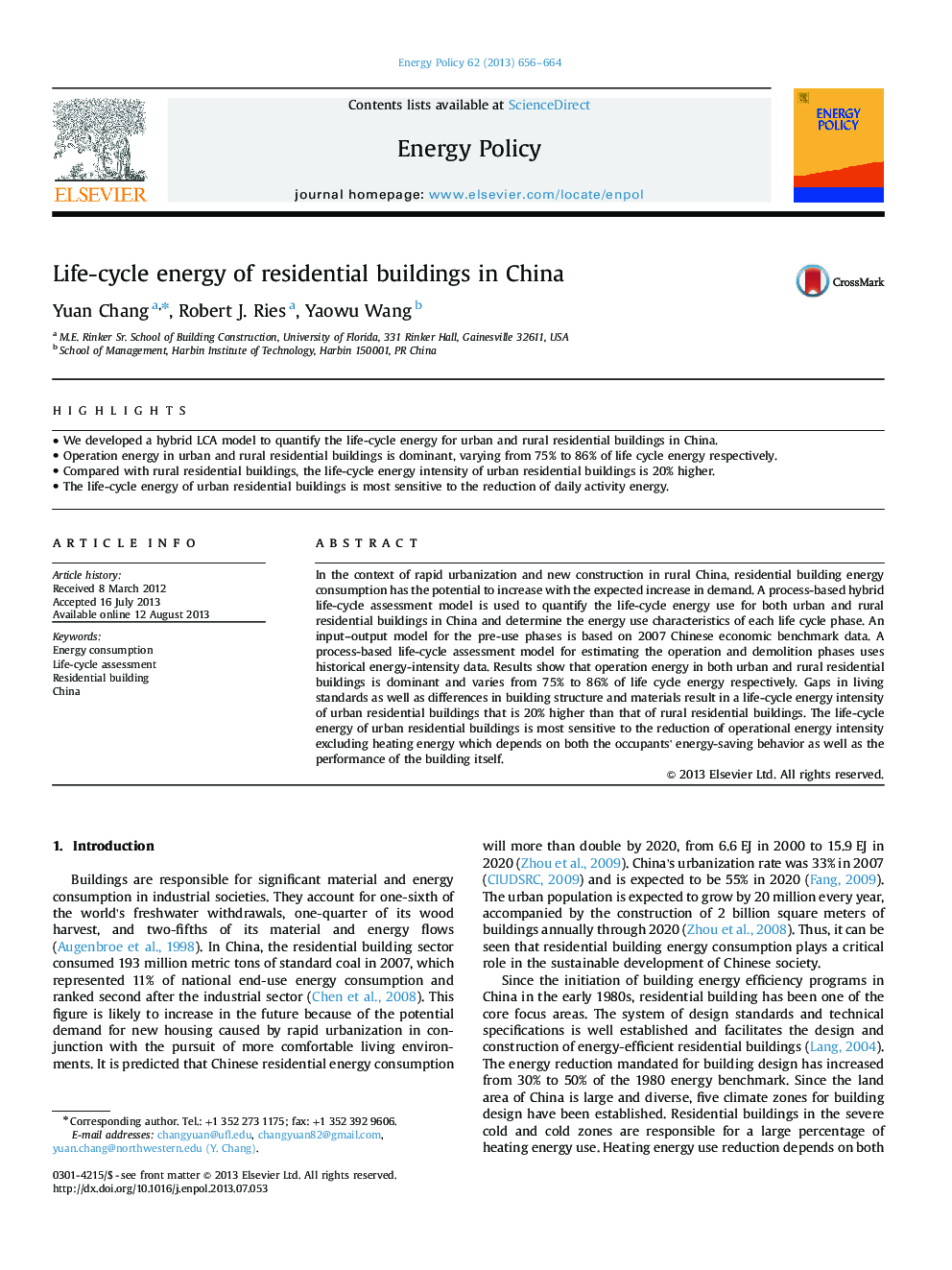| کد مقاله | کد نشریه | سال انتشار | مقاله انگلیسی | نسخه تمام متن |
|---|---|---|---|---|
| 7404287 | 1481296 | 2013 | 9 صفحه PDF | دانلود رایگان |
عنوان انگلیسی مقاله ISI
Life-cycle energy of residential buildings in China
ترجمه فارسی عنوان
انرژی چرخه زندگی ساختمان های مسکونی در چین
دانلود مقاله + سفارش ترجمه
دانلود مقاله ISI انگلیسی
رایگان برای ایرانیان
کلمات کلیدی
مصرف انرژی، ارزیابی چرخه حیات، ساختمان مسکونی، چین،
ترجمه چکیده
در زمینه شهر سازی سریع و ساخت و ساز جدید در روستایی چین، مصرف انرژی انرژی مسکونی با افزایش تقاضای مورد انتظار می تواند افزایش یابد. مدل ارزیابی چرخه عمر ترکیبی مبتنی بر فرایند برای اندازه گیری مصرف انرژی انرژی برای هر دو ساختمان شهری و روستایی در چین و تعیین ویژگی های مصرف انرژی در هر مرحله چرخه زندگی استفاده می شود. یک مدل ورودی-خروجی برای مراحل قبل از استفاده مبتنی بر داده های اقتصادی سال 2007 چین است. مدل ارزیابی چرخه عمر مبتنی بر فرایند برای تخمین عملیات و فاز تخریب از داده های شدت انرژی تاریخی استفاده می کند. نتایج نشان می دهد که انرژی عملیاتی در هر دو ساختمان شهری و روستایی، غالب است و از 75 تا 86 درصد انرژی چرخه زندگی متغیر است. شکاف در استانداردهای زندگی و همچنین تفاوت ساختار و مواد ساختمانی منجر به افزایش شدت انرژی زندگی ساختمانهای شهری می شود که 20٪ بالاتر از ساختمان های روستایی روستایی است. انرژی زندگی ساختمانهای شهری شهری حساسیت بیشتری نسبت به کاهش شدت انرژی عملیاتی صرف انرژی گرمایی دارد که بستگی به رفتار مصرف انرژی اشخاص و نیز عملکرد ساختمان دارد.
موضوعات مرتبط
مهندسی و علوم پایه
مهندسی انرژی
مهندسی انرژی و فناوری های برق
چکیده انگلیسی
In the context of rapid urbanization and new construction in rural China, residential building energy consumption has the potential to increase with the expected increase in demand. A process-based hybrid life-cycle assessment model is used to quantify the life-cycle energy use for both urban and rural residential buildings in China and determine the energy use characteristics of each life cycle phase. An input-output model for the pre-use phases is based on 2007 Chinese economic benchmark data. A process-based life-cycle assessment model for estimating the operation and demolition phases uses historical energy-intensity data. Results show that operation energy in both urban and rural residential buildings is dominant and varies from 75% to 86% of life cycle energy respectively. Gaps in living standards as well as differences in building structure and materials result in a life-cycle energy intensity of urban residential buildings that is 20% higher than that of rural residential buildings. The life-cycle energy of urban residential buildings is most sensitive to the reduction of operational energy intensity excluding heating energy which depends on both the occupants' energy-saving behavior as well as the performance of the building itself.
ناشر
Database: Elsevier - ScienceDirect (ساینس دایرکت)
Journal: Energy Policy - Volume 62, November 2013, Pages 656-664
Journal: Energy Policy - Volume 62, November 2013, Pages 656-664
نویسندگان
Yuan Chang, Robert J. Ries, Yaowu Wang,
